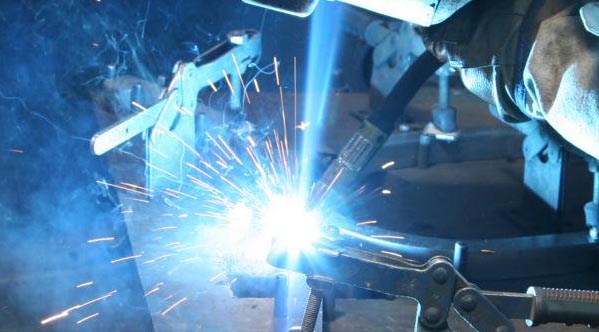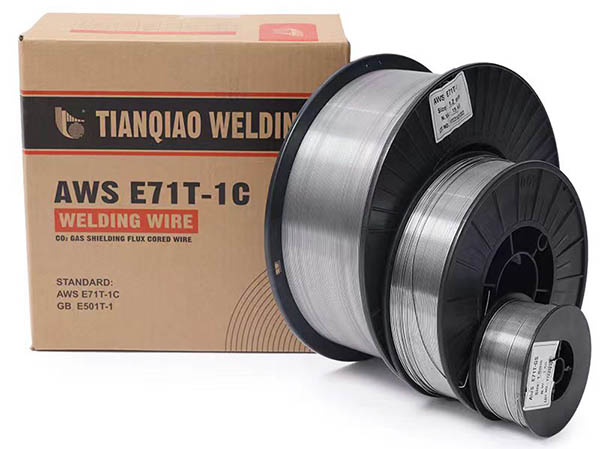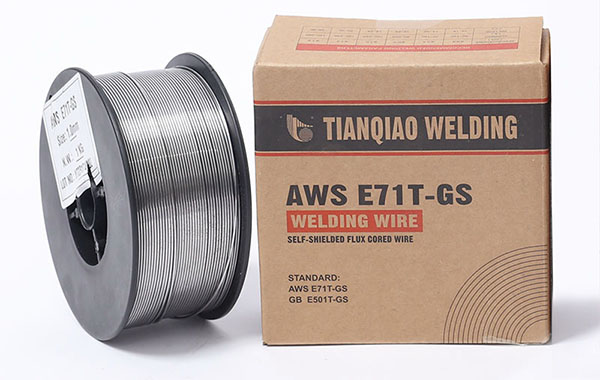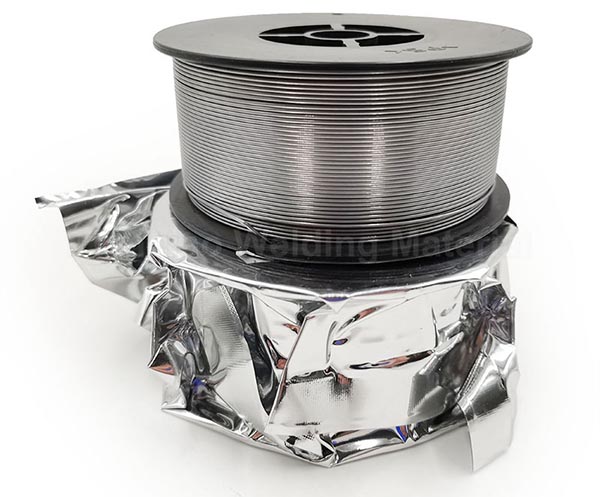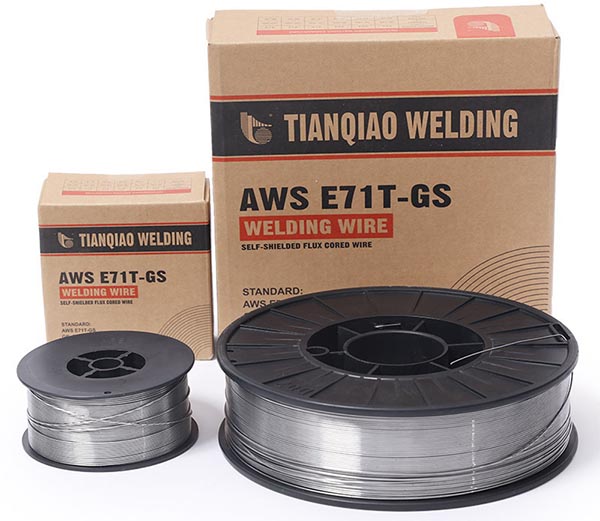Flux-cored welding wire first appeared in the United States and Germany in the 1920s. However, it was not until the 1950s that it was really widely used in industrial production, especially after the 1960s and 1970s. With the emergence of fine-diameter (below φ2.0mm) all-position flux-cored welding wire, flux-cored welding wire entered a rapid development stage. In recent years, the use of flux-cored welding wire in developed countries accounts for about 20% to 30% of the total welding materials, and is still in a steady increase.
What is flux-cored arc welding?
Flux-cored arc welding is a welding method that uses the arc between the flux-cored wire and the workpiece for heating. The English abbreviation is FCAW(Flux-Cored Arc Welding). Under the action of the arc heat, the wire metal and the connected parts of the workpiece melt to form a molten pool. After the arc moves forward, the tail of the molten pool crystallizes to form a weld.
What is flux-cored welding wire?
Flux-cored welding wire is a type of welding wire made by rolling thin steel strip into steel pipe or special-shaped steel pipe, filling the pipe with a certain composition of powder, and drawing it.
What are the characteristics of flux core?
The composition of flux core is similar to that of electrode coating, mainly composed of arc stabilizer, slag-forming agent, gas-forming agent, alloying agent, deoxidizer, etc.
Gas shield flux-cored welding wire E71T-1C
What is the role of the flux in the flux cored wire?
The role of the flux is similar to that of the electrode coating, and there are mainly the following types.
① Protective effect
Some components in the flux will decompose and some will melt under the action of the high temperature arc. The decomposition of the flux will release gas, and the released gas provides part or most of the protection. The molten flux forms slag, which covers the surface of the molten droplet and the molten pool, thereby protecting the liquid metal.
② Arc stabilization
The arc stabilizer in the flux core can stabilize the arc and reduce the spatter rate.
③ Alloying effect
Some flux cores contain alloying elements, which can alloy the weld.
④ Deoxidation effect
The alloying elements of the slag can react metallurgically with the liquid metal. Improve the composition of the weld metal and improve its mechanical properties.
In addition, the covered slag can also reduce the cooling rate of the molten pool and prolong the existence time of the molten pool, which is beneficial to reduce the content of harmful gases in the weld and prevent pores.
Gasless self-shield flux-cored welding wire E71T-GS
What are the advantages of flux-cored arc welding?
Flux-cored arc welding has the following advantages,
① High welding productivity, high deposition efficiency (up to 85%~90%), and fast deposition speed; when flat welding, the deposition speed is 1.5 times that of manual arc welding, and when welding in other positions, it is 3~5 times that of manual arc welding.
② Small spatter and good weld formation. Because the flux core is added with arc stabilizer, the arc is stable, the spatter is small, and the weld formation is good. Because the molten pool is covered with slag, the weld surface formation is significantly better than carbon dioxide welding.
③ High welding quality. Due to the use of slag gas joint protection, harmful gases can be more effectively prevented from entering the welding area. In addition, the molten pool exists for a long time, which is conducive to the precipitation of gas, so the weld has low hydrogen content and good anti-porosity ability.
④ Strong adaptability. Only by adjusting the composition of the flux core, the requirements of different steels for weld composition can be met.
What are the disadvantages of flux-cored arc welding?
The disadvantages of flux-cored arc welding are as follows.
① Compared with gas shielded welding, the cost of welding wire is higher and the manufacturing process is complicated.
② Wire feeding is more difficult, and a wire feeder with precise clamping pressure adjustment is required.
③ The flux core is easy to absorb moisture, so the welding wire needs to be kept strictly.
④ Slag removal is required after welding.
⑤ More smoke and harmful gases are generated during welding, and ventilation needs to be strengthened.
Flux-cored arc welding usually uses pure carbon dioxide gas or a mixture of carbon dioxide and argon as the shielding gas. The type of gas needs to be selected according to the flux-cored wire used.
Argon gas is easy to ionize, so it is easy to achieve jet transition in the argon arc. When the argon content in the mixed gas is not less than 75%, flux-cored arc welding can achieve stable jet transition. As the argon content in the mixed gas decreases, the penetration depth increases, but the arc stability decreases and the spatter rate increases. Therefore, the best mixed gas is 75%Ar+25%CO2. In addition, the mixed gas can also use Ar+2%O2.
When pure CO2 gas is selected, since CO2 gas decomposes under the heat of the arc, a large amount of oxygen atoms are produced, and the oxygen atoms oxidize elements such as manganese and silicon in the molten pool, resulting in the burning of alloy elements, it is necessary to use welding wire with a high manganese and silicon content.
Post time: Jan-20-2025

